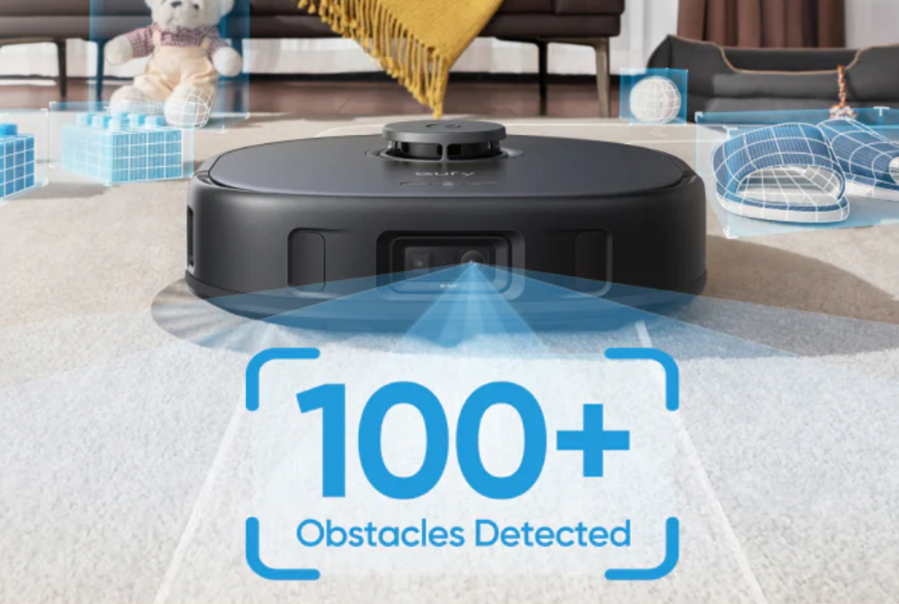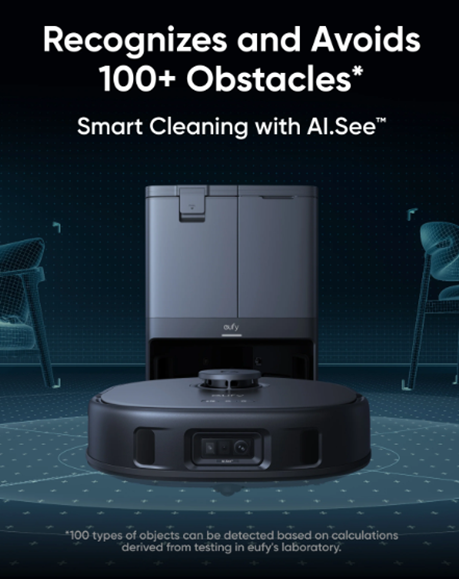Robot vacuums have revolutionized household cleaning, offering convenience with automated and efficient dirt removal. However, like any tool, they require regular maintenance to perform optimally. Cleaning your robot vacuum not only ensures that it picks up dirt effectively but also prolongs its service life, preventing wear and tear on its mechanisms. Committing to a regular cleaning schedule keeps your device functioning at its best, saving both time and money by avoiding potential malfunctions and expensive repairs. Whether you own a model from the popular eufy range or another brand, understanding how often to clean its various components can make all the difference. This guide breaks down the cleaning frequency for different parts of your robot vacuum and provides tips to maximize its efficiency, ensuring your home remains as clean as possible with minimal effort on your part.

Why Regular Cleaning Matters
Regular cleaning of your robot vacuum is crucial for maintaining its efficiency and longevity. Without routine maintenance, dirt and debris can accumulate, reducing its effectiveness and potentially causing long-term damage.
Better Suction, Longer Lifespan
By routinely cleaning the dustbin, filters, and brushes, you ensure that your robot vacuum maintains optimal suction power. This simple act prevents clogs and helps your vacuum perform efficiently. When your device operates without obstruction, its motor experiences less strain, contributing to a longer lifespan. Regular maintenance reduces the likelihood of unexpected breakdowns, saving you from costly repairs or replacements. Ensuring regular cleaning means your vacuum runs smoothly, consistently providing the deep clean your floors need and extending the appliance’s usefulness for years.
Hygiene and Indoor Air Quality Benefits
Cleaning your robot vacuum also improves indoor air quality. Dust, allergens, and pet dander can accumulate in a robot vacuum, and if not cleaned, these particles are recirculated back into your living environment. Regularly cleaned filters and brushes ensure that these contaminants are effectively captured. Maintaining cleanliness, especially with models like those from eufy, minimizes exposure to allergens, benefiting households with sensitive individuals. Enhancing hygiene in your home contributes to a healthier living space, making regular robot vacuum maintenance a vital component of your cleaning routine.
How Often to Clean Each Robot Vacuum Part
Efficient robot vacuum maintenance involves attending to each part at appropriate intervals for optimal performance and longevity.
Dustbin, Brushes, and Filters
The dustbin of your robot vacuum should be emptied after each cleaning cycle, especially if you have pets or high foot traffic. This prevents overfilling, which can lead to reduced suction and effectiveness. For brushes, inspecting them weekly is advisable. Remove any hair or debris wrapped around the bristles to ensure they spin freely and capture dirt effectively. Filters require attention every few weeks or as indicated in your user manual. Cleaning them maintains air flow and ensures the vacuum can trap dust effectively. For models like eufy, rinse washable filters with water and let them dry completely before reinstalling. Regular attention to these components prevents blockages and helps maintain suction power.
Sensors, Wheels, and Charging Contacts
Sensors play a crucial role in navigation and avoiding obstacles, so wiping them clean with a dry cloth weekly ensures your vacuum can detect its environment correctly. Wheels can accumulate hair and fluff, affecting movement; inspecting them every week and removing any debris ensures smooth rolling. Charging contacts should be cleaned with a dry cloth monthly to ensure efficient charging cycles. Dust or debris on these contacts can lead to charging issues or reduced battery performance. By keeping these parts clean, you maintain the robot’s ability to navigate and return to its dock reliably, ensuring it’s always ready for the next use.

Cleaning Frequency by Usage Type
Different usage patterns dictate how often you should perform maintenance on your robot vacuum.
Daily Use in Pet-Friendly Homes
In homes with pets, robot vacuums work hard daily, picking up pet hair and dander. For these households, daily cleaning of the dustbin is essential to prevent clogs and ensure powerful suction. Brushes may need to be cleaned several times a week to remove hair and maintain their efficiency. Filters should also be cleaned weekly to trap allergens effectively and maintain healthy air quality. This level of maintenance ensures that your vacuum can handle the added workload without compromising performance.
Light Weekly Use in Small Apartments
For those in small apartments with minimal dirt accumulation, a light weekly clean of the robot vacuum is often sufficient. Emptying the dustbin once a week after a cleaning cycle ensures readiness for the next use. Brushes can be inspected and cleaned every couple of weeks since they won’t encounter as much debris. Monthly filter maintenance should suffice, keeping them clear of dust accumulation. This schedule ensures efficient operation without overburdening maintenance tasks, allowing you to enjoy clean surfaces with minimal effort.
Tips to Keep Cleaning Efficient
To maximize your robot vacuum’s performance, consider these efficiency-enhancing tips.
Use Models with Self-Cleaning Features
Investing in advanced models with self-cleaning features can significantly reduce maintenance needs. For instance, eufy’s robot vacuums, come equipped with an auto-clean station. This feature automates the emptying of the dustbin, saving time and ensuring consistent suction power. Lidar navigation systems in some models enhance cleaning efficiency by mapping rooms and optimizing cleaning paths, reducing cleaning times and maintaining thorough coverage. By choosing a model with these features, you minimize the time spent on manual maintenance while enjoying peak cleaning performance.
Set Reminders and Use Smart Apps
Utilize smart apps associated with your robot vacuum to set cleaning schedules and reminders for maintenance. eufy’s app, for instance, allows users to monitor cleaning history and receive notifications when it’s time to clean specific parts like the dustbin or filters. Automatic reminders help you adhere to a regular maintenance routine, ensuring your vacuum operates optimally. Additionally, scheduling cleaning sessions when you’re away ensures uninterrupted and efficient cleaning, leaving your home spotless upon your return. These tools empower you to maintain your device effortlessly, enhancing its longevity and performance.
Conclusion
Maintaining your robot vacuum doesn’t have to be a chore. Regular cleaning of its components ensures optimal suction power, longevity, and cleaner air, especially if you have pets or allergies. Adjusting your maintenance schedule based on your home’s unique needs, such as frequency of use and presence of pets, can keep your device running smoothly. Investing in models with self-cleaning features and utilizing smart apps like those from eufy can further streamline maintenance efforts. These practices ensure that your robot vacuum remains a reliable partner in keeping your home clean, allowing you to enjoy the benefits of automation without the hassle of frequent, intensive upkeep.
